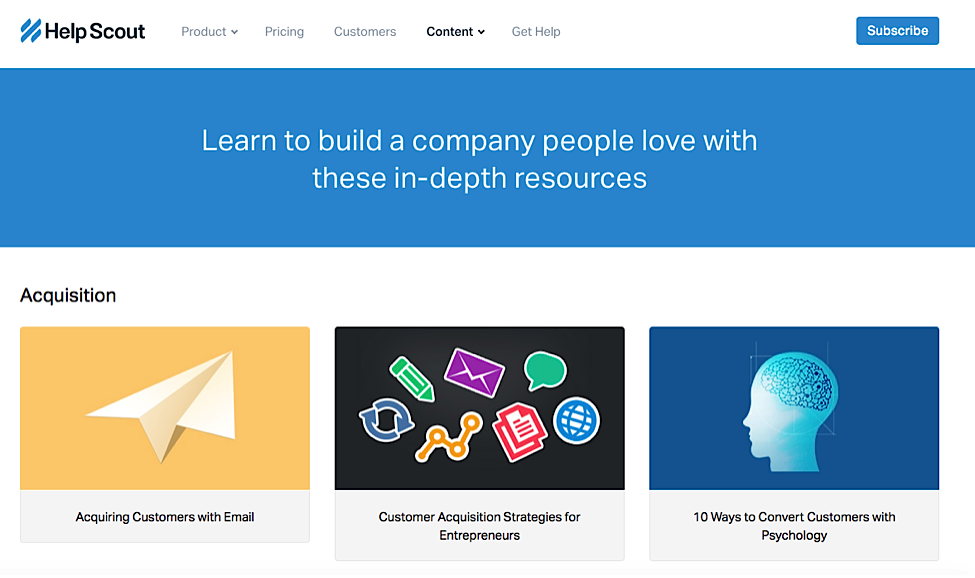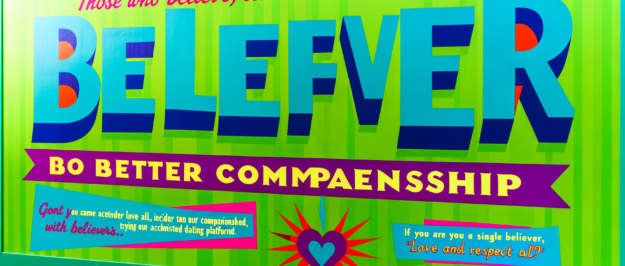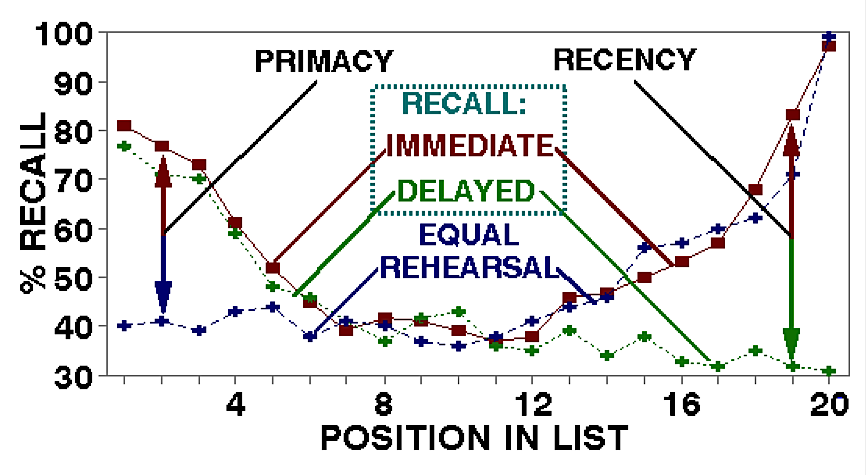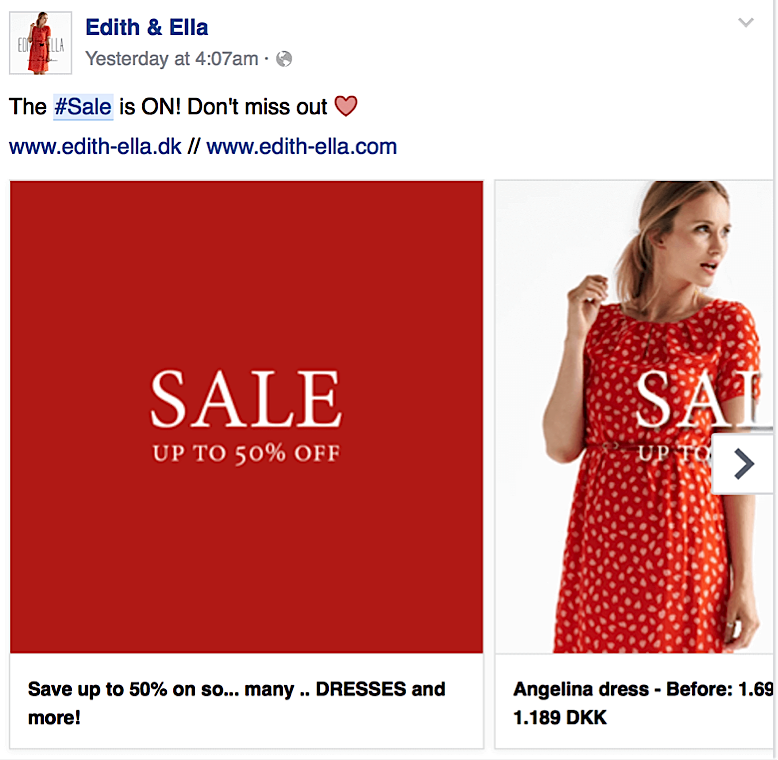All good content is rooted in human psychology. People read articles and books, view images and video, and click on ads when they’re curious, needful, or because their friends are.
We all have cognitive biases (each person’s own “subjective social reality“), and if you understand them, you’ll be able to target people’s specific needs and desires with specific words and tactics that sway readers to take the action you want them to take.
In this article, we’ll go through 10 basic psychological principles you can use to improve your content marketing.
1) The Rule of Reciprocity
One of the most powerful psychological biases people have is called “the rule of reciprocity.” It states that when you give value to someone, they feel indebted to you.
This tactic has been used countless times by all kinds of companies. For example, charities that seek donations might give you a dollar first (or endless personalized address labels and note pads), and ask if you could send it back to them with a small donation.
This is also part of the reason why content marketing as a whole works so well. Readers in your niche might need certain types of content at different stages of their buyer’s journey, and it works in your favor if they find that content on your site. By giving so much valuable and free information online, your readers will be more likely to reciprocate by providing their e-mail address and moving further down your funnel.
Learn More: How to Optimize Your Content Strategy with the Buyer’s Journey
For example, companies like HelpScout have entire sections of their site dedicated to providing users with actionable advice.

Even Gary Vaynerchuk often says that he wants to guilt people into buying his stuff.
However, there’s one key part of providing free value that most companies completely miss — you have to make sure you tell your customers about it. Most marketers assume that people will just somehow notice the time and effort they’re putting into content production. But most readers won’t connect the dots on their own.
That’s what Neil Patel does. He talks about how he invests $30K into content and gives it away for free. Your readers will feel the need to reciprocate your effort — only if they’re aware of it.
2) In-group Bias
In-group bias is the idea that if we feel that someone is in the same group as we are, then we view them more positively. For example, if you discover that someone is from the same city as you are or went to the same college, you’re likely to feel closer to them and probably give them preferential treatment, too.
Same thing applies to content marketing. If you can get your customers to see themselves in the same “group” as you, they’ll develop a deeper relationship with you and your brand. And people want to do business with those who understand them.
This is part of the reason why the best copywriters focus on understanding the words that customers use to describe their problems. For example:
- if you’re selling marketing services to an SaaS company, you might say that you’ll help them “convert more free trial signups into paying customers to boost MRR” or “improve onboarding to reduce the churn rate”
- if you’re targeting e-commerce companies, you could say that you’ll help them “reduce cart abandonment”
By using the words that your customers use, you can show them that you “get” them.
3) Us vs. Them
Using an “us vs. them” structure in your content helps you apply both in-group and out-group bias.
Out-group bias is similar to in-group bias, except it refers to the opposite effect. If you don’t think that a person has anything in common with you or “gets” you, you’re unlikely to give them any type of preferential treatment.
That’s why you never want to refer to your target audience as “them.” For example, the following ad (targeted at Christians who are looking to date other Christians) says in the subheading: “Christians believe in love. ‘Love one another’ is written in their code.”

Source: All Day Creative
The problem here is that it talks about “their code” instead of “our code,”which invokes out-group bias. When it comes to addressing your customers, you should always use “you” or “we” — so that you’re either addressing them personally or putting yourself in the same bucket as them.
However, one way you can use out-group bias to your advantage is by creating an “us vs them” paradigm against your competitors.
Once you show your readers that you understand them by using their language or identifying with their problems, you can then position yourself against the competition by telling your readers why your content is better than your competitors’, or that you’re offering them something that no one else is.
4) Social Proof
People like to use every mental “shortcut” they can to limit the amount of cognitive work they have to do when evaluating something. And that’s why social proof works well when it comes to boosting conversions.
Here’s a great definition: “Social proof, also known as informational social influence, is a psychological phenomenon where people assume the actions of others in an attempt to reflect correct behavior for a given situation…and is driven by the assumption that surrounding people possess more knowledge about the situation.”
It’s like peer pressure without the nasty pressure. It’s also the reason why when your mom demanded, “Well if everyone else jumped off a bridge, would you?” your response was always: “Yes!”
There are a few different types of social proof triggers that you can incorporate into your marketing:
Testimonials/Reviews
Testimonials are essentially word-of-mouth marketing on the Internet. By having third-party sources verify that your product or service is “legit,” other prospects and leads tend to be more convinced to transact with you.
According to Neil Patel, once an Amazon product hits 400-500 solid reviews, it’s easy to generate $70K – $150K in monthly revenue. This goes to show how powerful good reviews can be.
You should display your testimonials on your site, but in different areas depending on the type of business you run. For example, if you run a local business, you could put your reviews on Google Search or Yelp. If you run an SaaS company, you could display your testimonials on the homepage of your website. If you have an e-commerce site, you should show positive reviews on the product pages (like Amazon does).
Read More: How to Get More Reviews for Your Local Business

Source: LukePeerFly
Influencer Endorsements
Endorsements by influencers can be immensely powerful for your business. If the influencer is well known in your niche or industry, having their validation is a great way to show that you’ve got a good product or service.
Influencer recommendations don’t need to be as thorough as normal testimonials. In fact, influencers don’t necessarily have to have used your product. Any compliment that they’ve given to your business or any member of your team will still carry a lot of weight.
Media Logos
Another way of showcasing your business’s credibility is by displaying press clips or awards. If you’ve been featured in places like TechCrunch, the Huffington Post, Forbes, or whatever publication is relevant to your industry, it can help add more legitimacy to your business. Don’t be shy — show off your accolades!
5) Serial Position Effect
The serial position effect is the idea that people can most easily recall information from the beginning or end of a list.
According to a study by Indiana University, people are more easily able to recall the first and last set of words out of a list of 20, whereas the recall rate for the words in the middle was pretty low.

Knowing this, it’s important to make sure that they key elements of your sales pitch are outlined both at the beginning and the end. This way, you can make sure that your main points aren’t “lost in the weeds.”
6) Availability Cascade
One of the most well-known biases in the marketing world is called the “availability cascade,” which says that the more a piece of information is repeated, the more likely we are to believe that it’s true.
This is part of the reason that companies invest so much money in recurring television ads. When you’ve seen a million different television commercials for Mercedes Benz that say “The Best or Nothing,” you start to think of Mercedes Benz as a luxury car brand.
When you hear a company describe themselves in a certain way over and over again, you start to trust them more and more.
There are different ways you can use this to your advantage. For example, in your e-mail nurture sequences, you can craft your narrative around whatever you believe differentiates you from your competition.
Maybe it’s superior customer service, like Zappos, or fast delivery like Amazon.
Whatever your advantage is, make sure you constantly weave it into your content. Then, over time, you’ll become known for it. (Of course, it has to be true!)
7) The “But You Are Free” Technique
The “But You Are Free” (BYAF) Technique says that if you remind people that they have the freedom to accept or decline your offer, they’re more likely to say “yes.”
According to this study from Taylor & Francis Online, random individuals were asked whether they could spare some coins so that the experimenter could take the bus. When the phrase “but you are free to accept or refuse” was added, people were substantially more likely to offer the bus fare — and gave twice as much as those in the control group.
Part of the reason this works really well is because it lowers the mental “guard” people put up when listening to your offer. If you’re trying to persuade them, they might be concerned that your offer isn’t actually as good as you make it out to be, or that the action you’re trying to get them to take isn’t really worth their time. We all tend to be a little wary (and cynical) of the unsolicited sales pitch.
But by reminding them that they are have a choice, you lower their guard, thereby getting them to evaluate the situation less defensively.
This can be used in different ways when presenting your offer. For example, at the end of your e-mail funnel after you make a hard sell, you can say something like “if you still decide not to join, that’s totally cool and we respect that.”
By giving them the freedom to say no, you can lower their guard and get them to say “yes.”
8) Surprising Headlines
People appreciate unpredictability. Researchers at Emory University gave participants two pleasant stimuli — water and fruit juice. Some participants received the stimuli in predictable patterns, while others received the stimuli in unpredictable patterns.
Surprisingly, brain scans revealed that participants reacted more favorably to receiving the juice and water in patterns they couldn’t predict. This shows that people like unexpected pleasure more than pleasure they can predict.
You can apply this to your content marketing by providing your audience with content that they wouldn’t normally expect. For example, try writing about unconventional tactics in your field, like Quicksprout:

Or you can just outline strategies that no one else is talking about:

The one downside of writing these types of headlines is that it’s easy to overstep the line into clickbait. If you over-promise or over-hype your article in the headline and deceive people in the body of the content, then readers probably won’t return to your blog. People don’t like it if your content doesn’t live up to their expectations.
Related Content: How To Write Blog Posts that Actually Convert Readers into Customers
9) Fear of Missing Out (FOMO)
One of our biggest fears is missing out on something important.
A lot of companies already capitalize on this, and sometimes it has harmful effects. For example, some people are addicted to watching the news (or endlessly scrolling through Facebook) because they subconsciously don’t want to miss out on important information. And 69% of Millennials fear missing out on social events.
There are a few ways you can take advantage of FOMO in your own content marketing. One way is by showing scarcity in your offers:

You could offer limited-time discounts, limited-time bonuses, “only # left in stock” or remove your offer altogether after you’ve announced the deadline. One of the biggest barriers people have to making an immediate purchase is the thought “I can just do it later.” By adding urgency, you can persuade people to act now, before it’s “too late.”

Another way to use FOMO in your marketing is by creating events around your product launches. This is part of the reason why people still line up on the sidewalk when Apple launches a new iPhone, or wait all night outside of stores for Black Friday sales — even though they know that they could just shop online.
And it doesn’t have to be a physical event. In the middle of your product launch, you can encourage people to comment on a new blog post or engage in a Facebook group or participate in a special draw for a free or discounted product.
Being part of an event with others just like you makes everything more fun.
10) Cognitive Dissonance
Cognitive dissonance occurs when you make an argument or take a stand that goes against someone else’s beliefs. When this happens, people tend to view your argument or blog post through an emotional filter than a rational one.
For example, when Neil Patel wrote a post about how he spent over $50,000 on Instagram to test its ROI, he got tons of discouraging comments from people who have negative associations with marketers who advertise in “flashy” ways on Instagram.
When you get negative comments on a blog post, it can be tempting to immediately take them down or not touch that topic again. However, it’s important to be able to listen to honest feedback and criticism from your market from random comments from people who would never buy from you in the first place.
Conclusion
Cognitive bias is at the heart of all marketing, so if you want to move people further down your sales funnel, try these ten psychological hacks — before it’s too late! In crowded markets like SaaS or e-commerce, it’s practically essential.
How do you incorporate psychology into your content marketing? Let us know in the comments!


